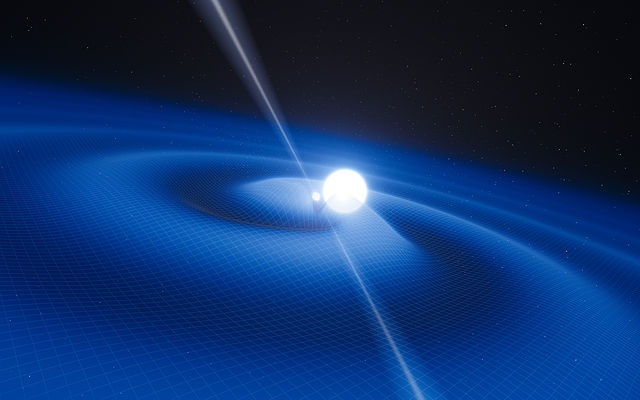PSR J0348+0432 is a pulsar–white dwarf binary system in the constellation Taurus. It was discovered in 2007 with the National Radio Astronomy Observatory's Robert C. Byrd Green Bank Telescope in a drift-scan survey.
Artist's impression of the pulsar PSR J0348+0432 and its white dwarf companion
A neutron star is a collapsed core of a massive supergiant star. The stars that later collapse into neutron stars have a total mass of between 10 and 25 solar masses (M☉), possibly more if the star was especially rich in elements heavier than hydrogen and helium. Except for black holes, neutron stars are the smallest and densest known class of stellar objects. Neutron stars have a radius on the order of 10 kilometers (6 mi) and a mass of about 1.4 M☉. They result from the supernova explosion of a massive star, combined with gravitational collapse, that compresses the core past white dwarf star density to that of atomic nuclei.
Central neutron star at the heart of the Crab Nebula
Radiation from the rapidly spinning pulsar PSR B1509-58 makes nearby gas emit X-rays (gold) and illuminates the rest of the nebula, here seen in infrared (blue and red).
A computer simulation depicting a neutron star with accretion disk, spewing out X-rays through the magnetic axis
NASA artist's conception of a "starquake", or "stellar quake"





